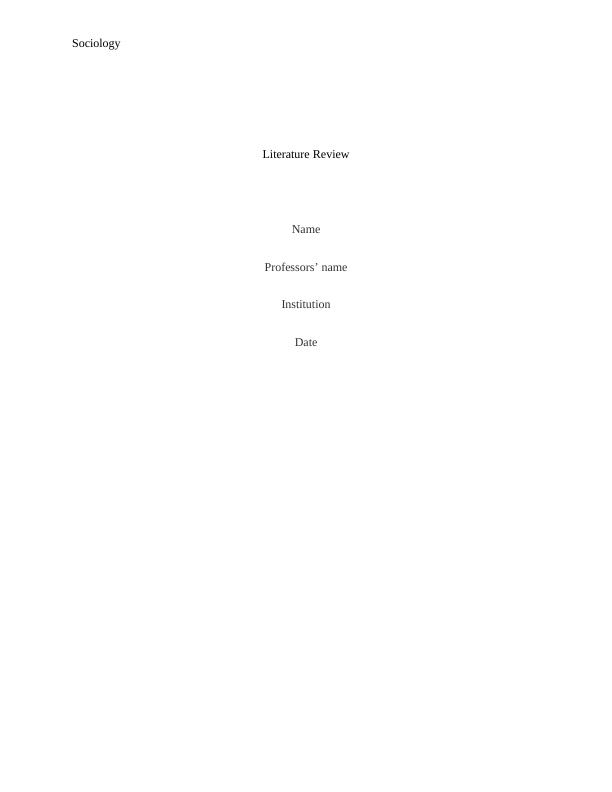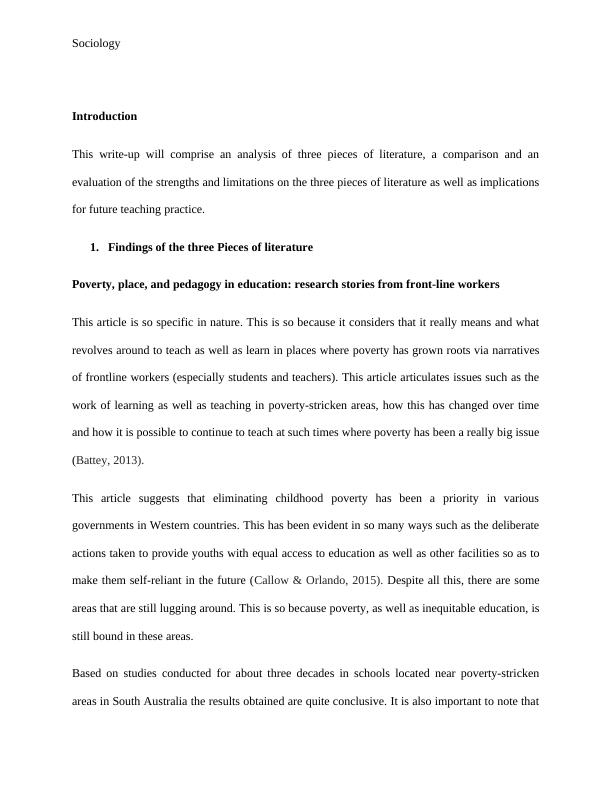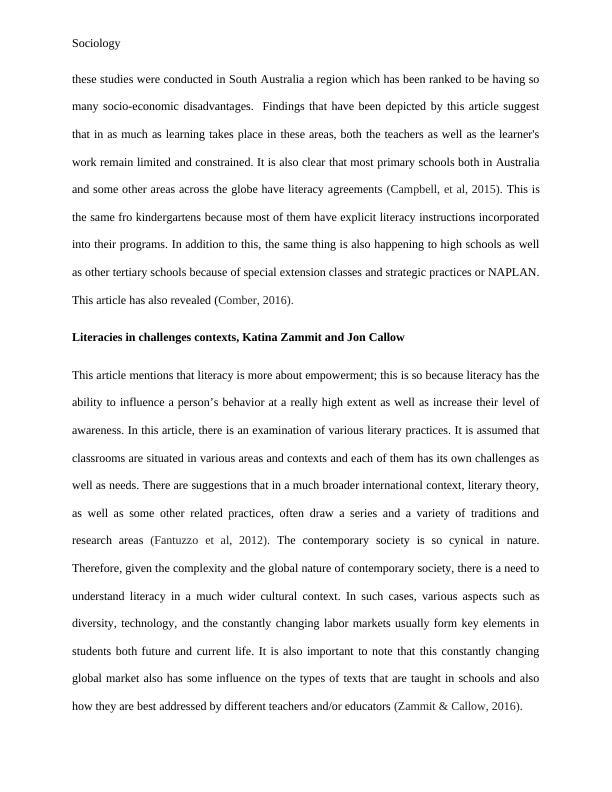Literature Review on Poverty, Place, and Pedagogy in Education
The authors examine how to address child homelessness in American and Canadian language arts classrooms and suggest ideas for advocacy, literacy teaching, research, and policy.
11 Pages2876 Words88 Views
Added on 2023-03-17
About This Document
This literature review analyzes three pieces of literature on poverty, place, and pedagogy in education, comparing their strengths and limitations and discussing implications for future teaching practice.
Literature Review on Poverty, Place, and Pedagogy in Education
The authors examine how to address child homelessness in American and Canadian language arts classrooms and suggest ideas for advocacy, literacy teaching, research, and policy.
Added on 2023-03-17
ShareRelated Documents
End of preview
Want to access all the pages? Upload your documents or become a member.
Relationship between bilingual learners, exemplary teachers and literacy practices: A review of empirical studies
|6
|1813
|295
Impact of NAPLAN Tests on Curriculum and Pedagogy
|23
|7020
|3
The Sociology of Early Childhood -
|10
|2526
|13
Literacy Instruction for Children: Strategies and Evaluation
|10
|2740
|25
Complexities of Literacy Learning for Aboriginal Children and Evaluation of Phonics and Whole Language Approaches to Teaching
|9
|1614
|272
Teacher Professional Learning and Development
|12
|3637
|181




